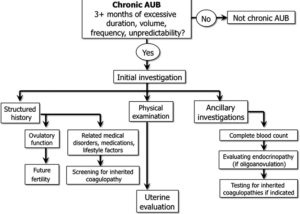If you are a woman without menstrual problems, you are in the minority.
Why do I say that? Many of the women I see went on the Pill as a teenager to “fix” their menstrual problems. (If I had a dollar for every time I’ve heard, “I went on the Pill to regulate my periods”!) But the Pill doesn’t fix menstrual problems, it masks them. So if you went on the Pill for menstrual problems, you’ve probably still got the problems underneath.
But this post isn’t about Pill problems. (If that’s what you want to know about, read my series A Guide to Getting Off the Pill.) Rather, it’s about problems with your real-life menstrual cycle (because, on the Pill, it’s an artificial cycle).
What sort of menstrual problems am I talking about?
If you have them, you know about problems with your periods: too many, too much, too little, too few, too painful, or too irregular pretty much sums it up. I like to think of these as three main categories. Read on for more detail about:
Periods: Too many, too much or too long
These are all types of heavy bleeding, which used to be called menorrhagia. “Too frequent” is generally less than 24 days between periods, “too long” is lasting longer than 8 days, and
Too little, too few or too irregular
These are often problems with ovulation, hormones and/or nutrition. Amenorrhea is when you don’t get your periods. Oligomenorrhea is when they come less often than every 39 days. Less than 4.5 days is considered a short period.
Too painful
This is one of the main symptoms of endometriosis. This is especially likely if you have a family history. Painful periods can usually be improved or resolved using a naturopathic approach. You might like to read about how herbal medicine helps period pain here.
PMS (premenstrual syndrome)
PMS can come as physical symptoms before your period (bloating, abdominal pain, diarrhoea, and breast tenderness are especially common). It is also common to have mood-related PMS (being irritable, quick to fly off the handle, or crying at the drop of a hat). This is very amenable to nutritional treatment.
Are menstrual problems a doctor thing, or can you treat them naturally?
I am a big believer in good diagnosis. The medical paradigm is brilliant for that. Additionally, for safety reasons, you should have a basic medical screen to rule out causes of period problems that are harmful to your health. Your doctor will need to rule out fibroids, polyps, ovarian cysts, cancer, clotting disorders, and possibly endometriosis. (To read a summary research article about diagnosis, click here.)
After you get the right diagnosis, your options are open as to how you would like to pursue a solution: the medical route, the natural route, or a combination. You might like to check that your doctor is following the basic flow chart below to work out if there is a medical cause that needs addressing.
(Note: in this flow chart, AUB stands for abnormal menstrual bleeding, which covers most menstrual problems except PMS. The old name for AUB was DUB, or dysfunctional menstrual bleeding. I guess they thought it was time for it to be dubbed something else. But lame jokes aside, the wording your practitioner uses does tell you something important: whether they are following the research.)
Flowchart For Addressing Menstrual Problems
(I got this flow chart from this article, which is freely available to the public.)
If you are not on the contraceptive Pill, but have not reached menopause, you will have hormonal cycles of some sort. Your ‘’cycle’’ generally refers to the time between periods. Your cycles may be short or long, regular or irregular, plagued with problems or hassle-free. Problems include amenorrhea (lack of periods), menorrhagia (heavy periods), dysmenorrhea (painful periods) metrorrhagia (irregular periods) or PMS (premenstrual syndrome). These can all have a huge impact on women’s health and well-being. Understanding what is normal is important, as normal cycles are often a good indicator of good health.

